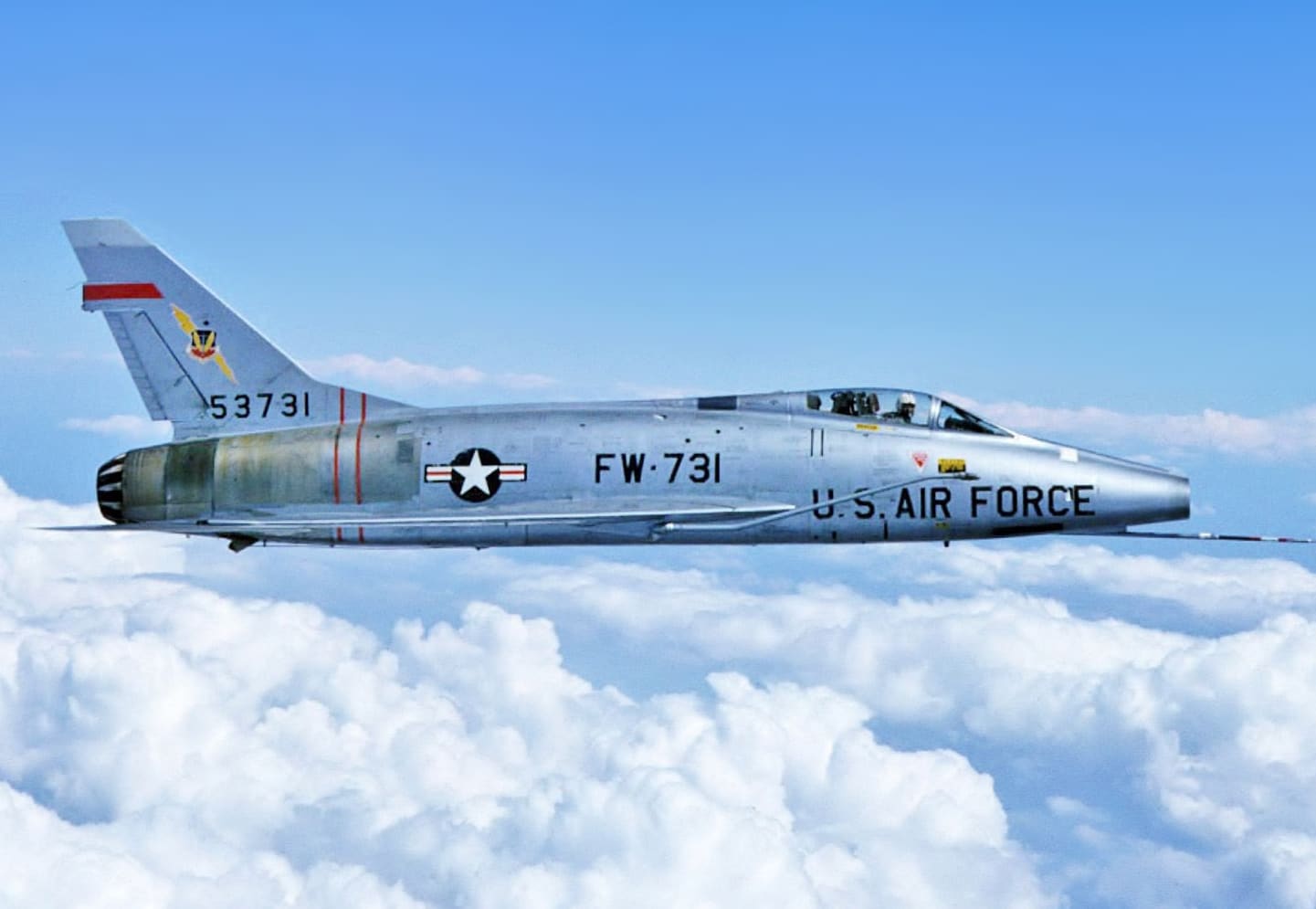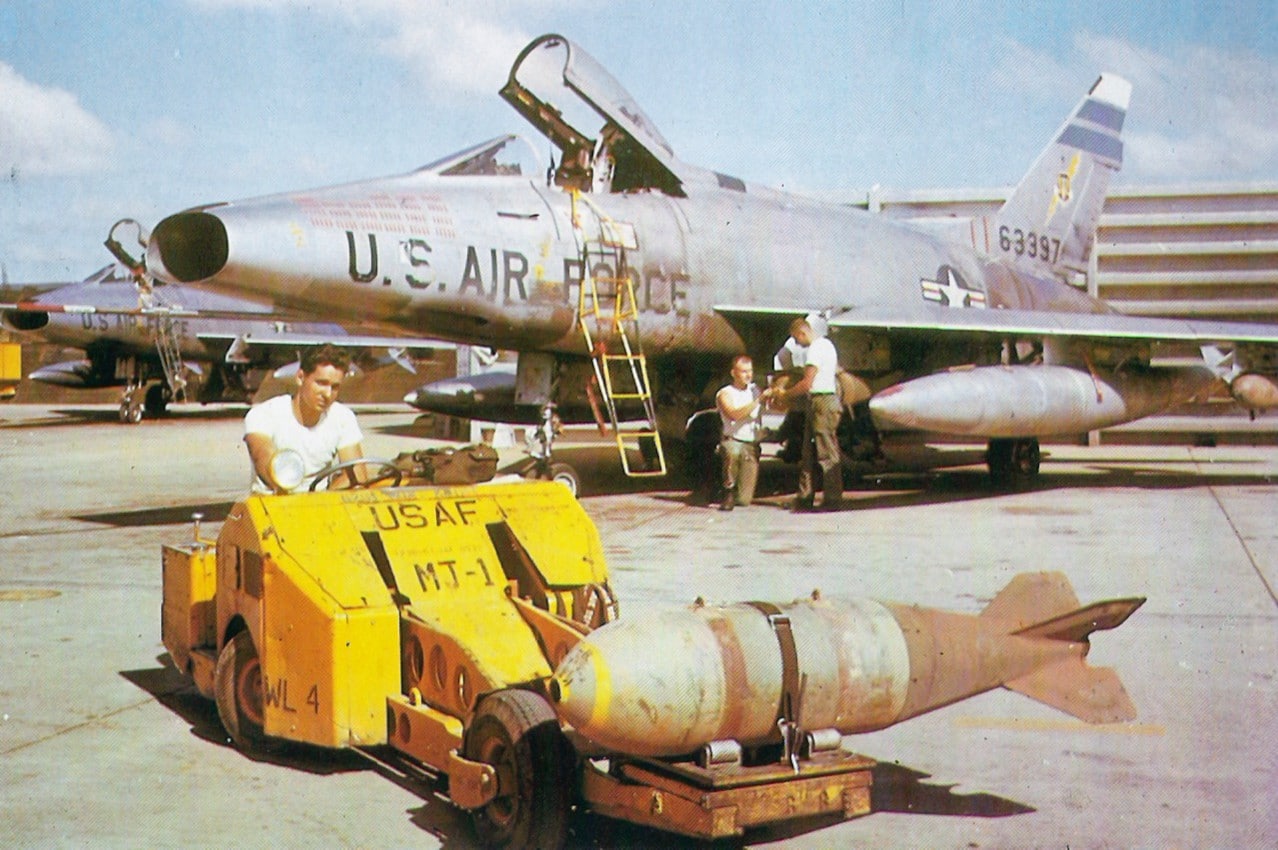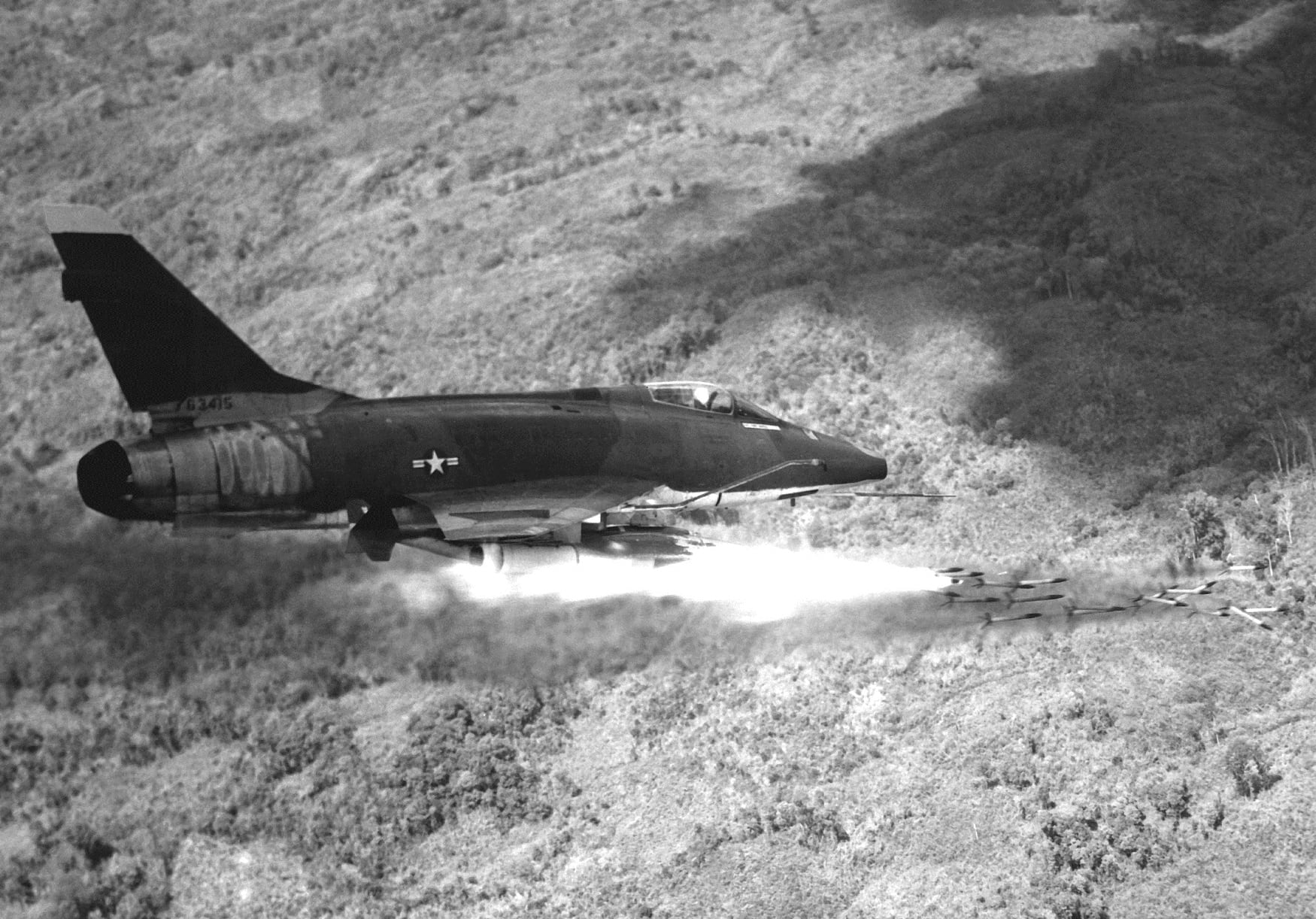Haste Makes Waste
The 479th Tactical Fighter Wing (TFW) based at George Air Force Base (AFB) in Victorville, California finally gained operational status during September of 1955. The experience of the 479th with the F-100A served to hasten both the replacement of the F-100A with the F-100C and the 479th to re-equip with Lockheed F-104 Starfighters within just three years. Other F-100As were all withdrawn from service by 1961 after 47 were lost to mishaps, recalled once when The Berlin Crisis took place, and finally retired by 1970 when replaced by other jets.

Better But Not Quite Yet the Right Jet
The F-100C was the fighter-bomber the USAF wanted and not what it needed. The F-100C retained most of the design deficiencies of the F-100A but could drop bombs. Equipped with an uprated Pratt & Whitney J57-P-21 turbojet engine that was as prone to compressor stalls as the previous version, the F-100C was later modified with yaw dampers to reduce instances of inertia coupling. Capable of carrying drop tanks but incapable of carrying all standard USAF ordnance, F-100Cs were phased out of service by 1970 after 85 of them were lost to operational mishaps.

So Much for Fighter Work
By the time the F-100D variant was introduced in 1956 the Hun had become a ground attack jet- an excellent ground attack jet, but nothing more. Other USAF fighters would take over the role of fighter-interceptor. The F-100D was equipped with extended wings and a larger vertical stabilizer, an autopilot and upgraded avionics. Later production F-100Ds could carry the AIM-9 Sidewinder infrared-guided air-to-air missile and the Martin GAM-83A / AGM-12 Bullpup air-to-surface missile. But not everything was rosy with the F-100D either.

Grounded Again But Still Serving
At first the F-100D was plagued by electrical system problems, landing gear and brake parachute malfunctions, and the inflight refueling probes had a tendency to part with the aircraft during high speed maneuvers. Due to inconsistent application of field or depot fixes for these issues it became necessary to review the entire fleet of 700 aircraft to standardize them. This was eventually accomplished via the High Wire standardized modification program. Later the Combat Skyspot program added X band radar to facilitate ground-directed bombing day or night by F-100Ds.
The Crucible: Air War in Vietnam

Jungle Huns
The Hun served in Southeast Asia longer than any other American jet. They served as MiG combat air patrol (MiGCAP) escorts for F-105 Thunderchiefs and other fighter-bombers, as Misty forward air controllers (FACs), and when modified with radar receiving equipment to employ anti-radar missiles like the AGM-65 Shrike, in the defense suppression or Wild Weasel roles. During a MiGCAP escorting F-105s attacking the Thanh Hoa bridge, F-100s also fought the first air-to-air jet combat of the Vietnam war, shooting down three North Vietnamese MiG-17s- even though they were never officially credited as aerial victories.

The Guard Working Hard
Air National Guard F-100 squadrons flew 24,000 sorties and 38,000 combat hours in Southeast Asia. These Guardsmen, many of them from the 120th TFS Cougars of the Colorado ANG, the 136th TFS Rocky’s Raiders of the New York ANG, the 174th TFS Bats of the Iowa ANG, and the 188th TFS Tacos of the New Mexico ANG, were consistently rated as some of the most effective and efficient Air Force assets in-theater. They delivered some 4,000,000 rounds of 20 millimeter ammunition, 15,000 tons of bombs, and 5000 tons of napalm on enemy targets while losing 14 F-100s and seven pilots killed in action.


[…] UH-1D and UH-1E IroquoisCessna O-1 Bird DogDouglas C-47 Skytrainde Havilland Canada C-7A CaribouNorth American F-100D Super SabreHelio U-10D Couriera Lockheed P-2 Neptune from VP-18 Flying PhantomsFairchild C-119 Flying […]
As a side note the only air to air kill of a B-52 was by a NM ANG F-100